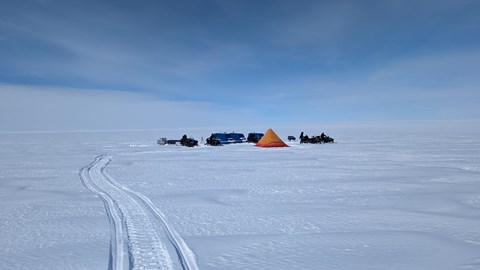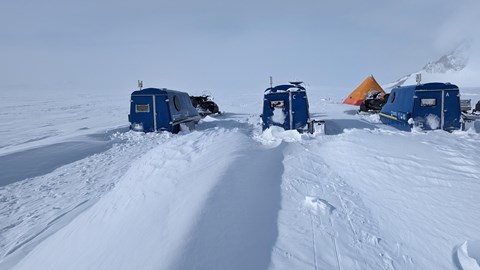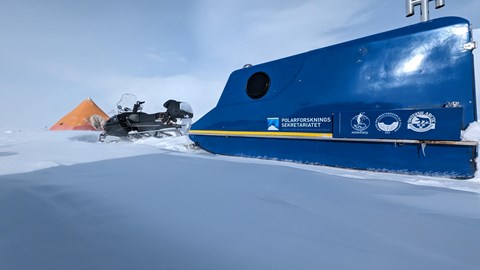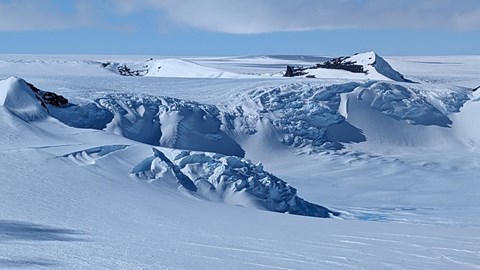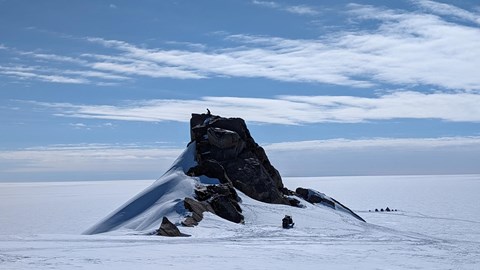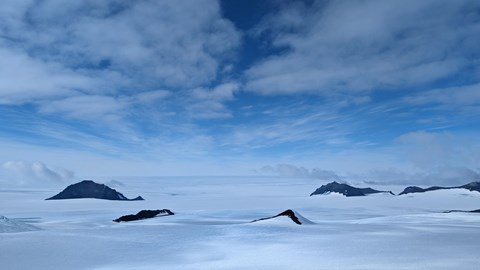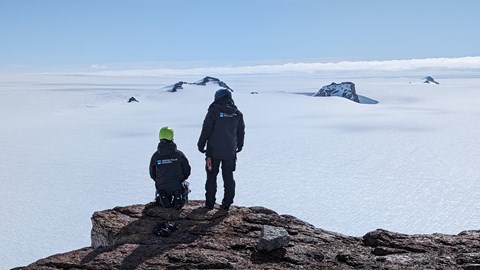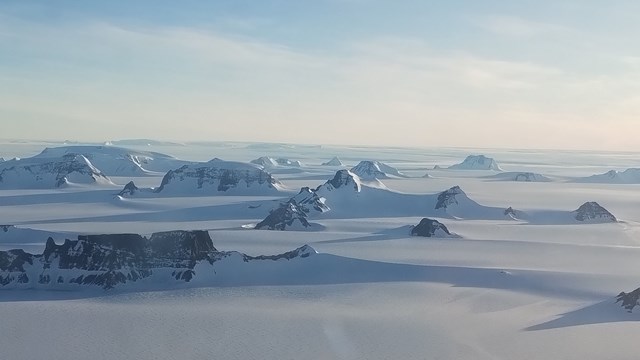A frozen landscape of snow and ice
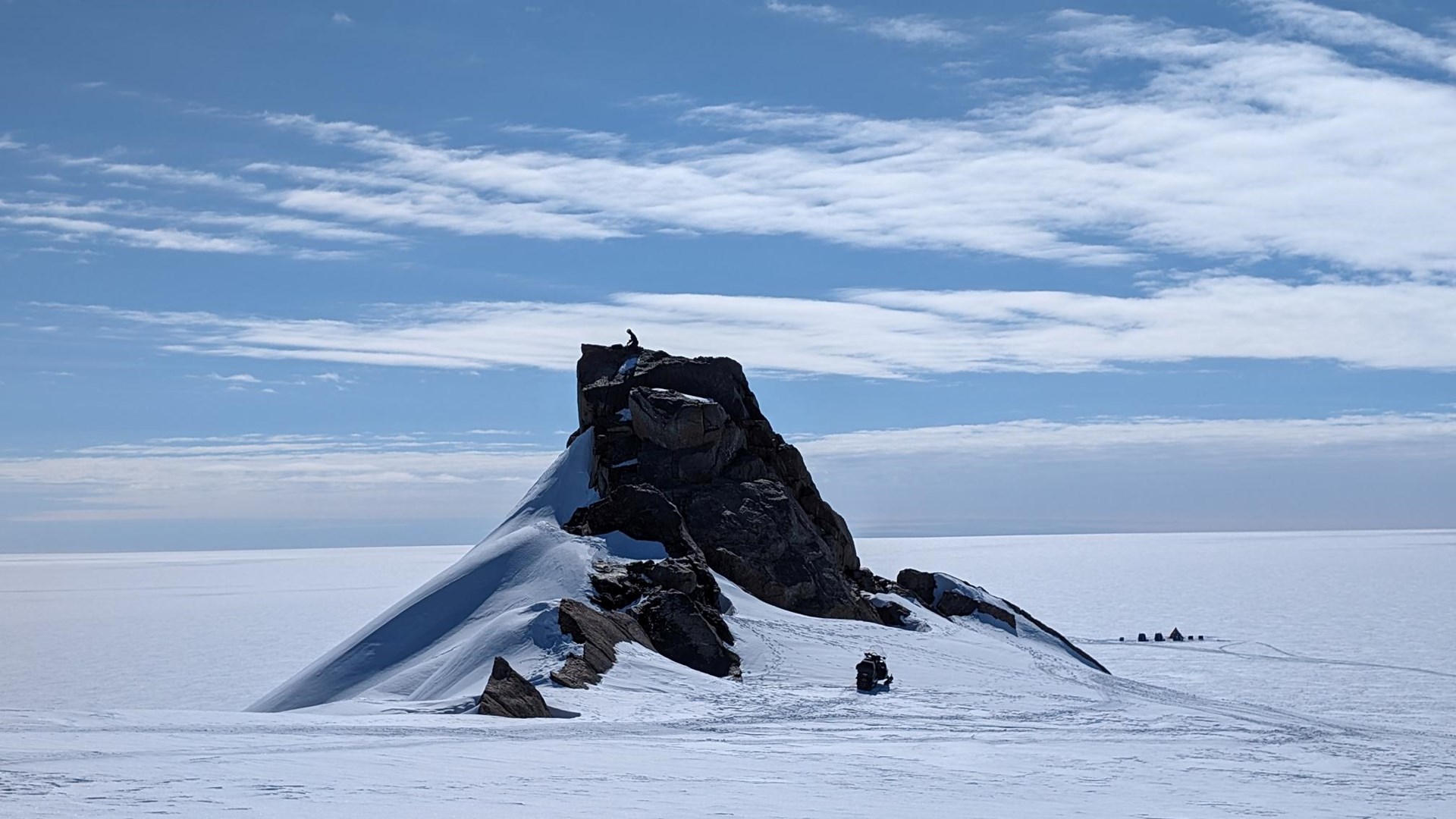 Sampling at the height of a nunatak. Photo: Håkan Grudd
Sampling at the height of a nunatak. Photo: Håkan Grudd
Text by: Håkan Grudd, expedition leader DML 2023/24
Like a thick white blanket, the inland ice covers everything. As we sit on our snowmobiles and drive hour after hour, one easily gets an impression of a frozen, undulating sea. Only in a few places does the white horizon break, where occasional dark mountain peaks emerge from the ice like isolated islands.
It is also a landscape in motion, a slow-flowing massive ice that moves steadily towards the sea, a few meters per year.
Here, it is below freezing year-round. Therefore, all the snow that falls builds layers, eventually turning into ice. In the inner part of Antarctica, the ice has been built up in this way for tens of thousands of years. There, the inland ice is 3–4 kilometres thick. Here at our camp, closer to the coast, it is at most 1–2 kilometres thick. The ice is deformed by its weight and moves like a slow-flowing mass towards the sea, where icebergs break off and sail away to warmer waters. The meltwater can then be taken up into the atmosphere as water vapour and, with the help of low-pressure systems, become new snowfall over the continent. It is a cycle that constantly continues.
So, the snow crystals falling around our camp today will eventually be incorporated into the glacier and reach the sea in thousands of years. It's a breathtaking time perspective!


